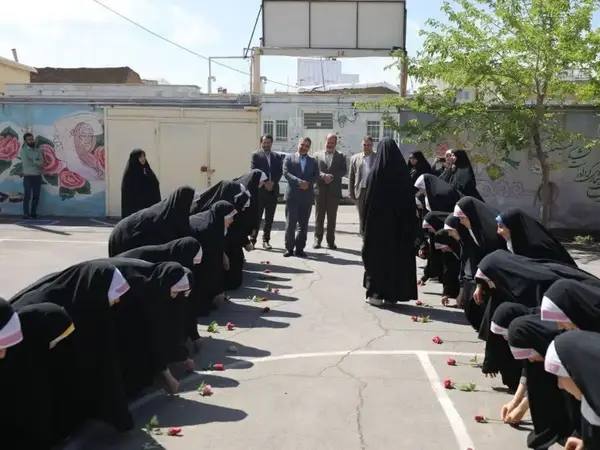
The Coordination Council of Teachers’ Unions issued a statement highlighting a disturbing event where the mayor of Zanjan visited a Quranic school. During this visit, school officials forced girls to wear mandatory hijabs and bow deeply to the mayor, resembling handmaidens honoring their master.
The statement correctly points out that turning girls and women into handmaidens is impossible because Iranian girls, through daily resistance from school to the streets, have defeated the dominant ideology. The courageous resistance of girls and women against the brutality of morality police and other “self-appointed” suppressive forces has become deeper and more inspirational, earning widespread admiration.
A passenger recounts an incident involving a taxi driver who, despite typically avoiding political discussions, momentarily forgets caution upon seeing some open-clothed women at a pedestrian crossing. The driver, almost involuntarily, comments on their bravery, contrasting it with his own caution. This inspirational quality of women’s resistance and struggles is also vividly visible on social media. In a video shared on social media on Friday, May 5, a male police officer, along with two others, forcibly put a woman into a police car after beating her. The widespread outrage from social media users against this inhumane act was significant. A grieving mother of one of the martyrs of the “Woman, Life, Freedom” revolutionary movement expressed her protest on her Instagram story: “Do you beat your own wife and kids like this? If you didn’t have that gun and the woman could fight back, would you still dare to hit her?”
This remarkable bravery is also reflected in international media. On Thursday, May 16, the French center-right newspaper Le Figaro published an article depicting this resistance. The article not only highlighted the severe street violence by police but also mentioned the regime’s use of economic tools against women seeking freedom of dress. Le Figaro’s report noted the dismissal of some women for so-called “improper hijab” or actors being barred from performing due to “inappropriate attire” as cited by officials. However, as some videos show, younger generations continue to resist. The article conveyed the experiences of several 16 and 17-year-old girls who proudly recounted their confrontations with hijab enforcers and their refusal to comply. One of them told Le Figaro’s reporter, “Eventually, we will wear them down.”
The bourgeois opposition, with the help of bourgeois media abroad, aims to confine the struggle and resistance of women and their male supporters to the framework of seeking dress autonomy. There is no doubt that in the fight against the ruling regime, the struggle for dress freedom is an important part of the women’s movement, but this militant movement is not limited to that. The struggles and resistance of women against police and “self-appointed” forces are part of the “Woman, Life, Freedom” revolution, demonstrating its vitality. Various social strata participate in this revolution, choosing their allies within and outside the country based on their current and future interests. Progressive women, striving for complete liberation from tyranny, exploitation, capitalism, and institutionalized patriarchy, will pay special attention to their real allies while collaborating with combatants against religious despotism. The lasting ally of the progressive women’s movement lies within the labor movement belonging to the front of scientific socialism; the ultimate goal of such a movement is to liberate humanity from all forms of gender oppression, exploitation, and tyranny, aiming to achieve a society free from inequality, ensuring welfare and freedom for all.

